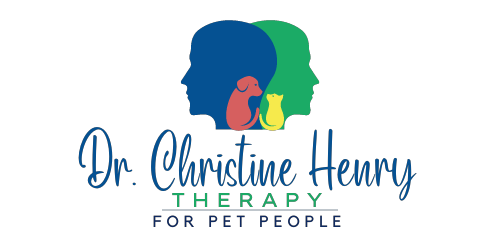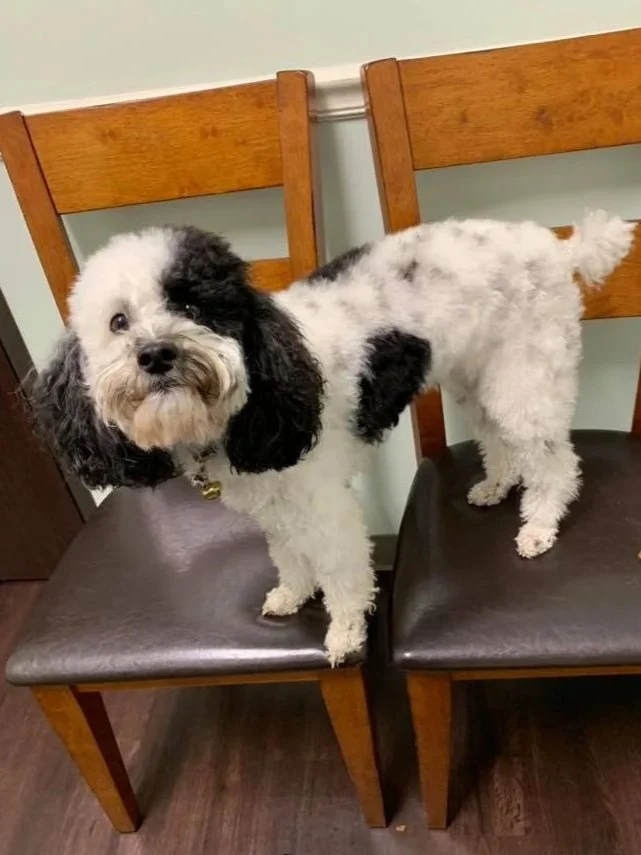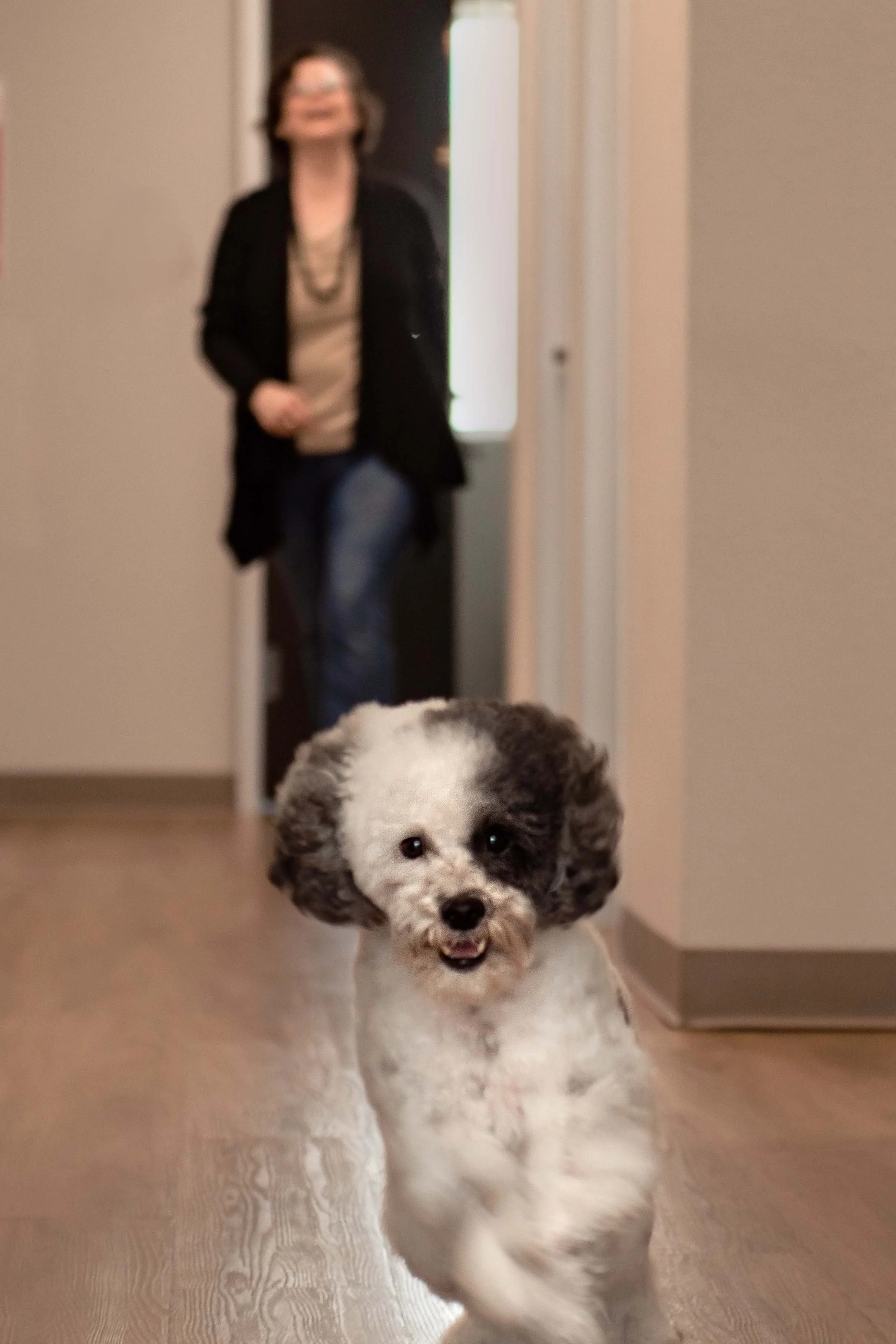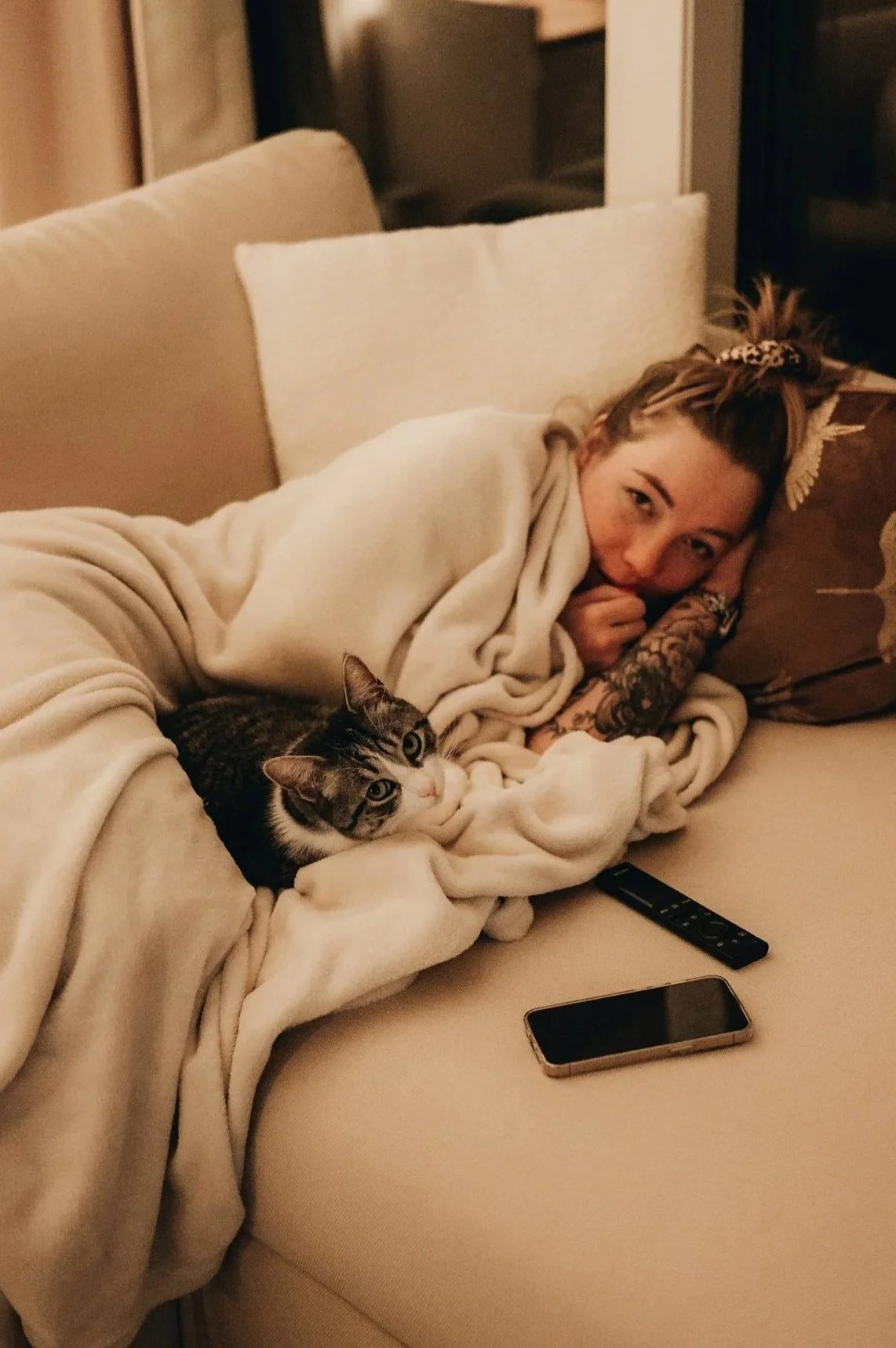My Heart Is Breaking While You’re Still Here: Coping with Anticipatory Grief for a Pet
You go to the vet for something you think is small, maybe they’ve been drinking a little more water, limping, coughing, or just “not quite themselves.” And then suddenly, you’re hit with a big diagnosis.
Cancer. Kidney failure. Congestive heart disease. Liver disease.
For some people, it hits immediately a wave of sadness that washes over you before you’ve even left the vet’s office, that heavy, sinking feeling in your chest and tears start to form in your eyes.
For others, like me, it hides behind shock for a few days, waiting until you finally slow down enough to feel it. At first, I kept my mind busy researching, problem-solving, trying to figure out what I could do to “fix it.” The day after our visit to the oncologist, I even sat down and wrote a blog about helping dogs with prostate cancer because doing something felt better than sitting with the pain. But when I finally stopped, about three days later, it all came crashing down. It felt like my heart broke in two. I didn’t want to get out of bed. The tears just kept coming, wave after wave. I can’t imagine my life without him.
As I sat there crying, here comes Murphy, the therapy dog that he is, gently licking away my tears. I looked up and saw his tail wagging, as if to say, “Hey, Mom, I’m still here.”
I give him a big hug, tell him I love him, and thank him for being in my life. He brings me his favorite toy and wants to play. For a moment, it feels like everything’s normal again.
Then the thought creeps in maybe the test was wrong. After all, he’s still doing all his usual things: barking at cows on TV, running to the kitchen when he hears the peanut butter jar open, chasing his ball down the hallway, following me from room to room like my little shadow. He still does his happy dance when he is fed and nudges my hand to be petted when I’m doom-scrolling on my phone.
And just when I start to settle into the comfort of “maybe he’s okay,” grief taps me on the shoulder. Sometimes it’s just a look, that tired softness in his eyes. And then it hits again. The way he sometimes refuses to go up the stairs. The quiet moments when his breathing feels heavier than it used to. The times he throws up or turns away from his food, or when there’s a dog barking on TV and he doesn’t even look up. Things that never used to happen.
Just like that, I’m pulled back to the truth I keep trying to forget: this is actually happening.
Anticipatory Grief For A Pet
This is the up-and-down rhythm of anticipatory grief. Anticipatory grief is the heartbreak that begins before the actual goodbye. It’s the mix of sadness, fear, guilt, and love that shows up when you know loss is coming but your pet is still here. It can feel confusing, one minute you’re laughing at something they do, the next you’re crying because you realize you won’t have that moment forever. Your brain keeps jumping between “cherish this” and “how will I survive when they’re gone?” The back and forth between holding on and preparing to let go is what makes anticipatory grief so exhausting.
It can be confusing to others why you feel this so deeply. But those of us who are “pet people” get it. Our pets aren’t just animals they’re family. They greet us at the door, sleep beside us, and follow us from room to room. There’s no pretending with them. No pressure to explain yourself or hold it together. They see us at our worst and love us anyway, in a way that many humans in our lives simply don’t.
And because they can’t communicate with words, there’s this extra layer of helplessness. You can’t tell them that they’re sick, or that the medicine is supposed to help, or why you suddenly won’t let them do the things they love like jump on the couch or go for long walks. You can’t explain why you keep checking on their breathing in the middle of the night.
What makes this even harder is knowing that, at some point, it often will be our choice. We’re the ones who will have to look into their eyes and decide when it’s time. There’s no clear rulebook for that, no moment when it suddenly feels “right.” You just carry this quiet ache in the back of your mind, wondering how you’ll ever know. You second-guess every sign, every good day, every bad one.
It’s an unbearable kind of love, the kind that asks you to break your own heart so theirs doesn’t have to keep hurting.
It’s also hard not knowing how the end will actually come. I’ve imagined this peaceful version, Murphy at home, sitting in his office chair, watching the squirrels climb up the tree outside the window. I picture the sun coming through, his breathing soft, me right there beside him.
But I also know it might not happen that way. Life doesn’t always give us the peaceful goodbye we hope for. It might be more like it was with some of my other pets, a rushed trip to the emergency vet in the middle of the night, that quiet, heartbreaking moment when you realize, this is it. The not knowing, how or when it will come, carries its own kind of pain
How to Live In The In-Between
I have no idea how long I have with Murphy. It could be a month, it could be six months, he could even defy the odds and live another year. I treasure each day I have with him. But it’s also a long time to live in limbo.
Here are a few things that are helping me and have helped some of my clients navigate this difficult stage. Small ways to care for him, and for myself, while we’re still in the middle of it.
Anchor to what’s true today
When your brain jumps to the future, the what-ifs, the when-will-it-happen thoughts — bring yourself back to what’s true right now.
Today, they ate their breakfast.
Today, they played with their toy
Today, they’re here.
Keep a Routine
Try to hold onto small rituals, the morning cuddles, the bedtime “goodnight,” the way you always share a treat after a walk. These familiar moments don’t just comfort you, they comfort your pet, too. Routine gives both of your nervous systems something steady to lean on when everything else feels uncertain. It reminds them (and you) that you’re still here together.
Create a Bucket List
Think about the little things that would make you and your pet happy — the things you’ve always meant to do but never quite got around to. For me, it was buying Murphy his favorite toy, the one he lost months ago and I kept forgetting to replace.
Murphy retired from in-person therapy, but next week, he’s going back to his old office for one day. I can already picture the joy on his face when he walks through those doors how he’ll leap into the arms of his favorite clients and wag his tail at the therapists whose offices were next to ours. Is this painful? Absolutely. I hesitated, knowing I’d be sitting there with others, crying my eyes out. But Murphy deserves to have that joy. He deserves to hear how awesome he is and how loved he’s been.
The Gift of Time
As hard as this stage is, I’ve started to realize what a gift it is to know that goodbye is coming. Most of the time, we don’t get that chance. Murphy going into the office isn’t just for him it also gives the people who love him a chance to say goodbye, to thank him, and to share a few last moments with the dog who helped them through so much. It’s going to be a day full of joy and tears and I think that’s exactly how it should be.
Sitting With Others in Grief
And then I realized, I won’t be crying alone. I’ll be surrounded by people who know him, who’ve seen the way he’s changed lives, and who feel this same ache of saying goodbye. It’s rare to have that kind of shared space, where love and grief can exist side by side. I think about how many people have to carry this kind of loss quietly, and it makes me even more grateful to be able to honor him together.
If you don’t have that kind of support, please know it’s out there. There are pet loss therapists you can talk with, and virtual support groups — even ones specifically for anticipatory grief. You don’t have to move through this alone. Having others who truly understand can make this time a little more bearable, and sometimes that shared understanding is the very thing that keeps you going. If you are looking for additional support, APLB (Association for Pet Loss and Bereavement) is an amazing organization that offers a directory of pet loss therapists as well as virtual support groups. Since I’m in the thick of it myself, I’m not taking pet loss clients at this time. But I’d be glad to point you in the right direction for support. Feel free to contact me, I’m always glad to help you find the right support. I also have a Pet Loss Resource Page filled with helpful links and ideas. If I don’t respond right away, please know it’s only because I’m deep in this process myself. I appreciate your patience and understanding.
Acknowledge What You ARE Doing
We often sit with guilt about what we’re not doing for our pet. But let’s take a moment to notice all that you are doing. You’re getting up several times in the middle of the night to let them out. You’re hand-feeding them when they refuse to eat. You’re changing diapers, giving medications multiple times a day, making endless trips to specialists.
And let’s be honest as much as we love them, the financial strain is real. Many of us are eating ramen noodles while our pets are dining on Farmer’s Dog. That’s love in action, too.
Caregiving takes a toll, even when it’s done with deep love. It’s important to look honestly at the toll it’s taking, because you can’t pour from an empty cup. You may find yourself frustrated by your own fatigue or feeling guilty for not doing more, when in reality, your exhaustion makes sense. When you pause to reflect on everything you’re carrying, you begin to see that you don’t need to push yourself harder you need to care for yourself, too.
Here are a few links to tools and assessments that can help you see, in numbers, the impact this level of care may be having on your energy, mood, and well-being.
Plan For The Hard Moments, Even If You Don’t Want To
It’s okay to make practical plans what vet you’ll call, what comfort items you want near, who you’d want with you. Having a loose plan doesn’t make it happen sooner. It just gives your future self a softer landing. Trying to determine if it’s time or not can be very challenging. I have written a blog that give some guidance How Do You Know When It Is Time To Let Your Pet Go? Here are some links to quality of life measures that can help give you in numbers an idea of how they are doing.
Let Yourself Have “Grief Days”
You don’t have to be strong or “make the most of every moment” all the time. Some days you’ll just need to cry and do the bare minimum and that’s okay. In some ways, grief is harder than depression. One minute you’re fine, and the next you’re knocked off your feet by a wave you didn’t see coming. If possible, take time off work. Eat whatever sounds good. Stay in bed and binge-watch a show. Doom scroll. Do whatever helps you get through the day.
Because getting through is enough. You don’t have to grow from it, find meaning in it, or turn it into a lesson right now. Just love them the best you can, for as long as you can. That’s all any of us can do and it’s more than enough.
That’s what I’m trying to do with Murphy. To love him through the in-between. To let myself feel it all, the joy, the dread, the gratitude, the heartbreak. Some days that means crying on the floor next to him, and other days it’s watching him run across the yard to the fence to chase the neighbors dog. Either way, I’m here. He’s here. And for now, I’m just trying to be present for the time we still have and to let that be enough.
Dr. Christine Henry is a licensed psychologist and an animal lover. She specializes in working with other “Pet People” who are working through past trauma, grief, religious trauma and are neurodivergent or highly sensitive people.





